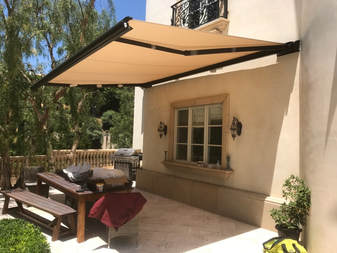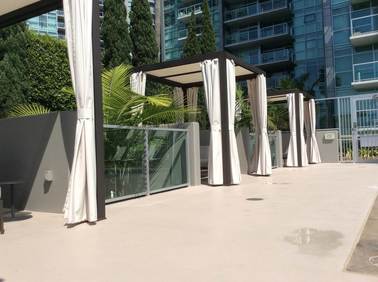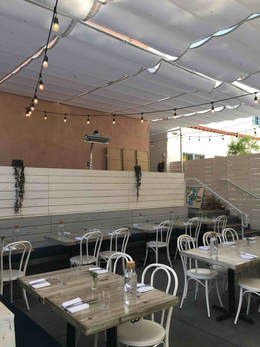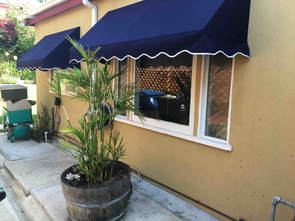Shade structures come in various shapes, sizes, and types. The most common and probably one of the oldest types is the awning. In its simplest construction, an awning is simply a piece of fabric held up by a frame used to provide shade. But, what are some awning facts that you should know, especially if you’re considering installing one for your business or home?
 Retractable Awning
Retractable Awning Here’s a quick list of some useful awning facts:
· Various Types: Awnings come in various types including but not limited to retractable, fixed, and temporary.
· Different Frames: Awning frames come in different types including steel, aluminum, wood, and even hard plastics.
· Specialty Fabrics: The textile of an awning is special and designed with several features including mold and mildew resistance, tear resistance, and more. (Check with your awning installer about the different textiles on the market you can choose from).
· UV Ray Resistant: This is an important quality of an awning; protection from the harmful rays of the sun is essential and can help keep your customers or family safe from skin damage.
· Various Types: Awnings come in various types including but not limited to retractable, fixed, and temporary.
· Different Frames: Awning frames come in different types including steel, aluminum, wood, and even hard plastics.
· Specialty Fabrics: The textile of an awning is special and designed with several features including mold and mildew resistance, tear resistance, and more. (Check with your awning installer about the different textiles on the market you can choose from).
· UV Ray Resistant: This is an important quality of an awning; protection from the harmful rays of the sun is essential and can help keep your customers or family safe from skin damage.
 Poolside Cabanas
Poolside Cabanas · Extension of your Outdoor Area: Awnings extend your outdoor dining area and your revenue generating seats. Awnings also extend lounge areas and space in backyards and places like hotels, shops, and other businesses.
· Fabric Replacement: The textile of your awning is replaceable. In fact, many awning owners don’t realize they do not have to replace the whole awning if the frame is still in good condition. (Ask your local professional awning installer about fabric replacement and have them inspect your shade structure to see if you can choose this option).
· Modified: Awnings can be modified with drop screens, outdoor curtains, and enclosures to create an outdoor space for diners or for your family.
· Fabric Replacement: The textile of your awning is replaceable. In fact, many awning owners don’t realize they do not have to replace the whole awning if the frame is still in good condition. (Ask your local professional awning installer about fabric replacement and have them inspect your shade structure to see if you can choose this option).
· Modified: Awnings can be modified with drop screens, outdoor curtains, and enclosures to create an outdoor space for diners or for your family.
 Slide Wire Awnings at Botanica
Slide Wire Awnings at Botanica Awnings have been around since ancient Egyptian times when they were used to shade crowds and provide relief from the harsh desert sun. Since then, awnings have evolved and include various colors, shapes, styles, and sizes that you can choose from. You can even specially engineer an awning to suit your taste.
Now that you know a little more about awnings, talk to your local professional about installing one today. For more information about awnings, feel free to contact us at American Awning & Blind Co. by visiting us at http://americanawningabc.com. Or call us at 800-654-5933. You can also email us at info@americanawningabc.com.

